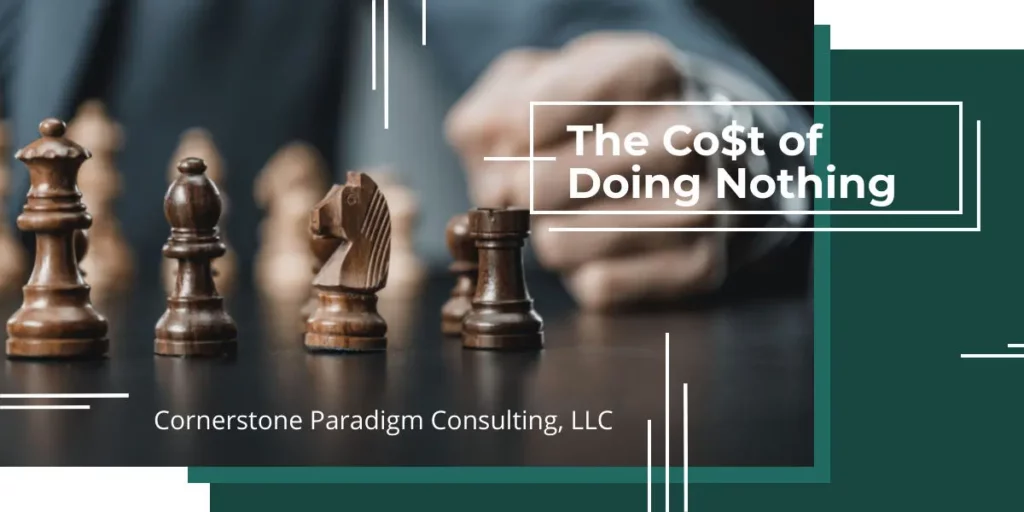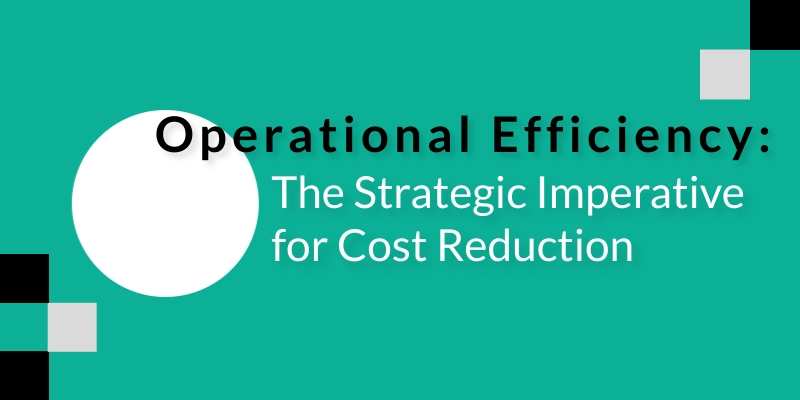The Hidden Price of Inaction: Unveiling the True Cost of Delayed Decision-Making in Business
Have you ever thought about what the cost of doing nothing does to your business? Business leaders are faced with making hard, and often expensive, decisions every day. Some are under the impression if you do not purchase an upgrade, and let your team continue with what they have, you’re saving money. Others want to wait for a better time to decide. Though inaction can lead to more expensive decisions down the road. We’re going to analyze and understand the actual cost, which may surprise you.
What is RONI?
RONI (return on no investment) is the idea that by not investing, it offers a negative return plus interest.
The challenge that follows “no investment” is risk; you are more likely to rationalize the costs of overworking your team, reworking items, and causing inefficiencies.
Erosion within the business
When we think about erosion, what may come to mind is deteriorating infrastructure or a natural breakdown from mother nature. When we talk about erosion in business, we are referring to the gradual destruction of a business. Running a company without any upgrades or investments will lead to a very unnatural and often quick erosion of the business, including the breakdown of processes, systems, your people from a skills perspective, and your customer’s experience.
The real risk when you continue to use legacy systems.
Using legacy systems or allowing your team to use outdated technology because it was passed by management or its low to no cost is not encouraged. Partially automated solutions or free tools that are included with your free third-party solution have quickly become inadequate due to evolving trends in the marketplace and the level of risk they can impose on fragile infrastructures. The natural progression is ultimately creating a technology void you won’t be able to easily overcome. Business planning for the long-term needs to consider the risks associated with choosing not to invest.
Additionally, every day we turn on the news, and there is more evidence of cybercrimes and their increasing level of complexity. The detrimental impact harms more than just the individual business. Without consistent updates, the effects of a vulnerable system costs enterprises hundreds of millions of dollars, which trickles down to supplier gaps and supply chain instability. An updated system can prevent it from becoming vulnerable to cyberattacks and ultimately passing on those unnecessary costs to the consumer. At this point, you must ask yourself how long will your customer pay for your inaction; it’s expensive.
They don’t build ‘em like this anymore.
When we think about cars from the 60s, nostalgic memories may come to mind but it also has some downfalls: the lack of comfortable seats, gas-guzzling engines, and no digital functions. The same goes for software in your company. It meets a certain standard only for a set amount of time, but as technology progresses, upgrades and maintenance are necessary. Technology must evolve as we evolve.
As I’ve said before, hackers are becoming more and more clever. They certainly aren’t holding up banks with ski masks anymore, but, instead, sitting at home developing their skills from the comfort of their homes via the internet. Automation is not just another ploy to get you to simply do something you don’t believe you need; it is a necessity for your business today and going forward.
What’s encouraging companies to look even beyond automation and address all four areas of business? They are realizing that wasted employee time is a combination of outdated technology, cumbersome processes, underdeveloped skills, and an inadequate voice of the customer design and data. To analyze and revise all these key areas will fall outside the formal programs you’ve heard before.
The loss of good talent.
Let’s put it this way. If you want to hire the crème de la crème of talent, then you must supply them with the proper tools to support your business and its growth. You will lose that top talent to lack of vision and investment. People take it personally; giving them the bare minimum can be perceived as you don’t value them. The people who don’t feel valued are the people looking for a new job on your time; others will leave without a new role lined up for fear of tarnishing their reputation any further.
The trick here is not buying several different technologies, cluttering up the business, processes and creating more steps and tasks. The right approach is to go through a process improvement analysis or process mapping to get to the root of your symptoms. This can take a long time to draw and is very detailed, but it’s necessary.
Bad customer experiences
The cost of doing nothing can sometimes mean a bad customer experience. These experiences are very memorable, and people will share it with their friends and family. Those reactive, sometimes impulsive, responses to a bad experience are usually not the first occurrence but from many repeat occurrences where the company at fault does not take action.
The cost to you can be a customer you haven’t met because of someone else’s bad experience. We can’t blame the person who spoke publicly about their experience if we have no intention to change or fix it.
The sales game is real
So, after reading through the risks, you’re probably wondering about how to invest and start on the next steps. Though I want to flag some things to remember. You and I know this as well as the next person, sales are sales. When it comes to technology the choices are endless. The number of suppliers entering the already saturated market has more than tripled over the last decade. The products you get exposed to, good or bad, will all depend on three things: marketing abilities, cold emailing, and connections.
For someone like me, the challenge becomes, how can they know this will resolve what your pain points are without knowing them. I cannot begin to tell you how many applications fail throughout my career because some you know, who know technology told you to buy XYZ, and the problem is still an issue. Likely it was not the right choice in the first place because identifying the core issues is where your answer lies.
You probably already know this, but it is quite easy to forget that there is not a software company in the world that will give you full honesty as their main goal is to sell their product. What we may lose sight of is technology companies cannot know what your issues are because you do not know what your issues are. You know what symptoms you have. If you are looking to figure out what your root causes are, you are going to have to do the work to uncover the root causes. It’s like looking for your keys when they are in your hand.
Have I convinced you to invest yet?
The cost of doing nothing will always vary from one company to the next; it will depend on the product or service, customer loyalty, and naturally the competitors. Companies not willing to change will quickly discover that it will always be the deciding factor to sink or swim. I do not encourage you to try it because by that time recovery may be out of reach. I will encourage you to pull yourself out of the picture and look from the outside in. Would you do business with you? How easy is it? Do you believe you are on the cutting edge or cut short?
You will always be in a better position when you are proactive rather than reactive to making your business the best it can be. The decision to invest in your business, partnering with an expert to help you strategize how to plan and implement a successful change initiative will have long-term positive effects. The truth is archaic technology and processes are leaving you without the full picture. According to the ACFE or Association of Certified Fraud Examiners, a typical organization loses 5% of their annual revenue to fraud each year with a total of $4.5T in reported occupational fraud loss in 2020; that number is not going down.
Strategy to being proactive
When was the last time you truly looked at your business and considered all the areas you can do things better? Here is a list of actionable questions you’ll need to first answer before embarking on a change journey. It is quite a meaty list, take it one question at a time.
-
Ask your team for feedback. No one knows better than them as to what can be improved
-
Take inventory of their feedback
-
Consider what’s really a priority in your initiative to do better business
-
Ask your customers what they want
-
Conduct online surveys
-
Review customer feedback
-
Look at your call center data
-
Measure how much time is wasted on inefficiencies
-
This will relate to doing things manually
-
Unique avoidable situations – more than one occurrence
-
Unique unavoidable situations – more than one occurrence
-
How much time is wasted on technology workarounds – calculate the time spent
-
Ask your team for their input
-
Look at your customer feedback
-
Develop a process map of your current state
-
Review your technology stack regularly to make sure it’s still accurate
-
Make decisions about technology based on your needs and business requirements







